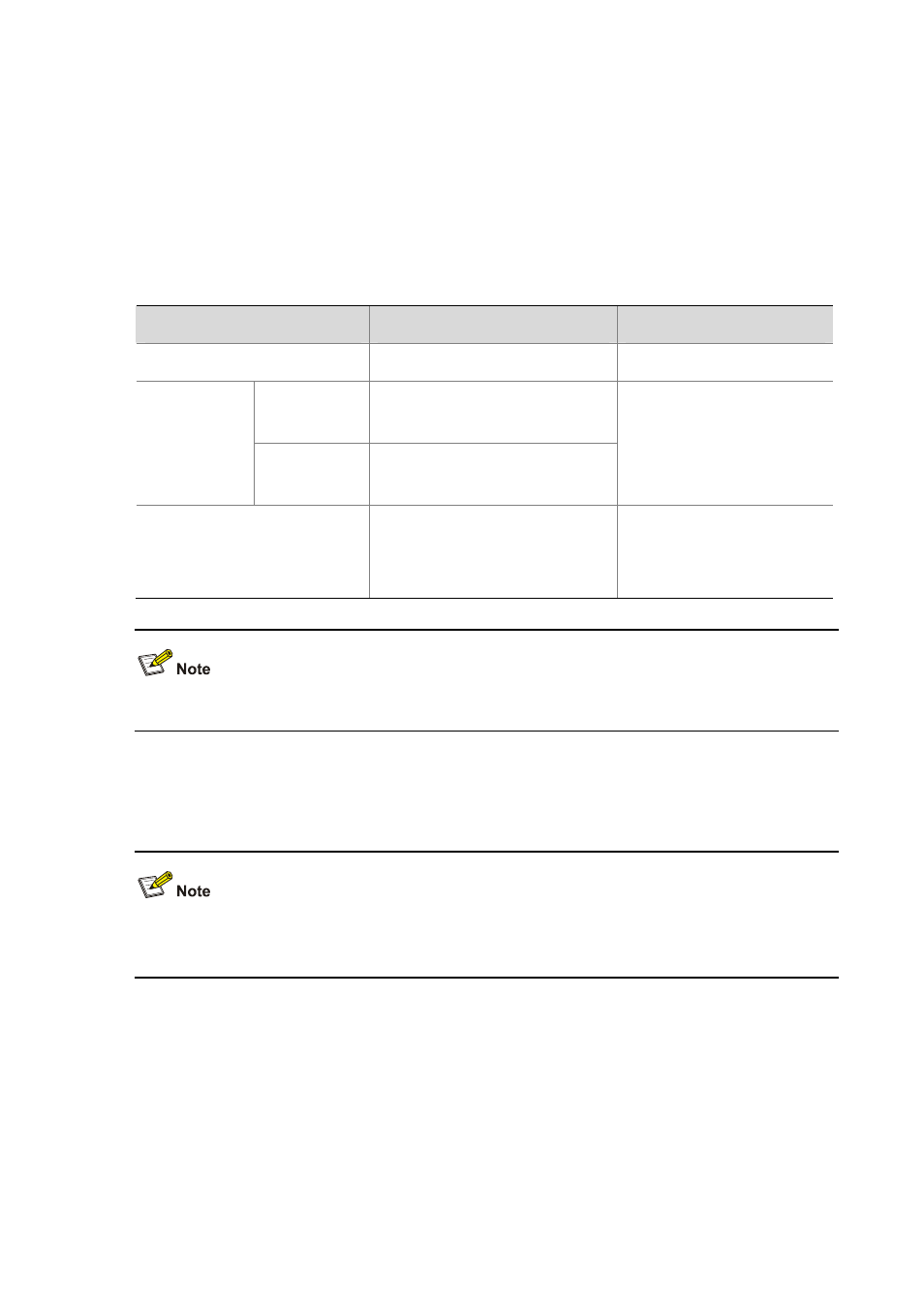Configuring cdp compatibility – H3C Technologies H3C S7500E Series Switches User Manual
Page 322

22-12
With Ethernet II encapsulation configured, an LLDP port sends LLDPDUs in Ethernet II frames
and only processes incoming, Ethernet II encapsulated LLDPDUs.
With SNAP encapsulation configured, an LLDP port sends LLDPDUs in SNAP frames and only
processes incoming, SNAP encapsulated LLDPDUs.
By default, LLDPDUs are encapsulated in Ethernet II frames. If the neighbor devices encapsulate
LLDPDUs in SNAP frames, configure the encapsulation format for LLDPDUs as SNAP to guarantee
normal communication with the neighbors.
Follow these steps to set the encapsulation format for LLDPDUs to SNAP:
To do…
Use the command…
Remarks
Enter system view
system-view
—
Enter Ethernet
port view
interface interface-type
interface-number
Enter Ethernet
port view or port
group view
Enter port
group view
port-group manual
port-group-name
Required
Use either command
Set the encapsulation format for
LLDPDUs to SNAP
lldp encapsulation
snap
Required
Ethernet II encapsulation format
applies by default.
LLDP-CDP (Cisco Discovery Protocol) packets use only SNAP encapsulation.
Configuring CDP Compatibility
For detailed information about voice VLAN, see Voice VLAN Configuration in the Layer 2 - LAN
Switching Configuration Guide
.
To make your device work with Cisco IP phones, you must enable CDP compatibility.
Because your LLDP-enabled device cannot recognize CDP packets, it does not respond to the
requests of Cisco IP phones for the voice VLAN ID configured on the device. As a result, a requesting
Cisco IP phone sends voice traffic without any tag to your device, disabling your device from
differentiating the voice traffic from other types of traffic.
With CDP compatibility enabled, your device can receive and recognize CDP packets from a Cisco IP
phone and respond with CDP packets, which carry the voice VLAN configuration TLVs. According to